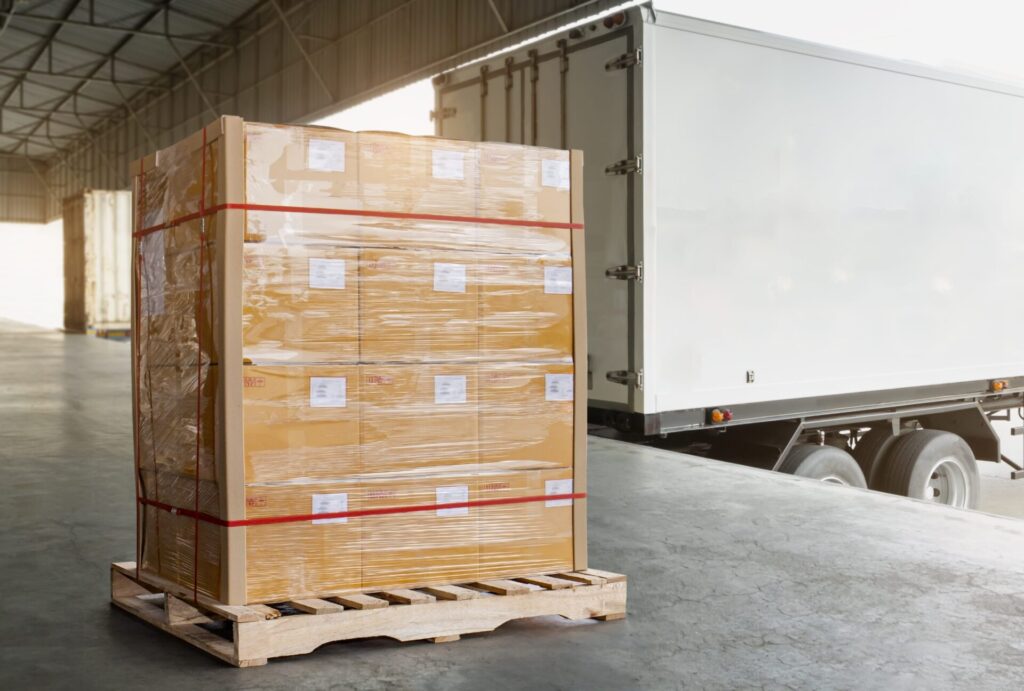
The Benefits of Using Regional LTL Freight Services
For businesses shipping smaller volumes or frequent partial loads within a confined geographic range, regional LTL freight services deliver distinct advantages. By focusing on shorter distances, these carriers can often provide speedier delivery, better pricing, and more personalized customer support than their national counterparts. Whether you’re trying to move goods quickly across state lines or serve multiple customers in a single metro area, regional LTL solutions can give you a competitive edge.
This article delves into the key reasons shippers choose regional LTL, highlighting cost savings, time efficiency, and more flexible partnerships. If you’re comparing carriers or looking to optimize short-haul routes, understanding these benefits will help you pick the right solution for your evolving logistics requirements.
Introduction
Why Regional LTL Is Gaining Attention
In an era dominated by e-commerce and on-demand deliveries, customers increasingly expect shorter transit times—even for B2B shipments. Full Truckload (FTL) might be overkill for small loads, while national LTL carriers often route everything through larger hubs, causing multiple cross-docks and potential delays. Regional LTL carriers, on the other hand, focus specifically on narrower coverage zones—often resulting in faster turnarounds, less handling, and a more nimble approach to specialized local markets.
Balancing Cost and Time in Local Markets
Many companies shipping within a few hundred miles grapple with the push and pull between shipping speed and budget constraints. Regional LTL carriers bridge that gap effectively, offering rates that reflect short hauls (thus fewer fuel surcharges) and dedicated local knowledge. The result? Quicker shipments at costs that are often competitive with national carriers—especially when factoring in minimal damage risk and simpler scheduling.
Defining Regional LTL Services
Coverage Areas and Core Advantages
A regional LTL provider typically operates within a set of neighboring states, a metropolitan region, or a specific corridor. Because they don’t attempt national reach, these carriers cultivate deep expertise of their region’s routes, traffic patterns, and local customers. This heightened focus leads to:
- Fewer Terminal Hops: Shipments may bypass large, congested hubs.
- Faster Pickup Windows, since trucks remain in closer proximity to shippers.
Comparing Regional vs. National LTL
- National LTL: Covers extensive geographies, harnessing big networks but at times slower transit, higher risk of damage.
- Regional LTL: Narrower routes mean more frequent, targeted runs, often 1–2 day deliveries for short distances.
For organizations whose logistics revolve around a tight geographic circle, regional carriers ensure minimal overhead for mileage, staff, and route management.
Faster Delivery and Reduced Transit Times
Minimizing Cross-Docks and Handling Points
One drawback of LTL shipping is the potential for multiple cross-docks, where cargo is repeatedly unloaded and reloaded. When your shipments remain in a smaller zone, carriers can skip or consolidate cross-dock steps, offering more direct routes. Fewer stops not only expedite deliveries but also cut the likelihood of damage or lost freight.
Meeting Tight Deadlines with Local Routes
Customers demanding quick turnarounds appreciate local carriers who move freight with minimal detours. Regional LTL lanes can handle urgent requests more readily, often employing dedicated local drivers who know peak traffic times or routes to avoid. This real-world knowledge translates into consistent on-time or accelerated shipping performance—a boon to manufacturers needing just-in-time supply or retailers rushing seasonal goods.

Enhanced Customer Service and Communication
Closer Carrier-Shipper Relationships
A national carrier juggling thousands of daily loads may offer limited support for each account. By contrast, regional LTL providers often know their customers personally and can tailor services, from scheduling specific pickup times to adjusting routes on the fly. This personal touch fosters trust and can help you swiftly resolve issues if they arise.
Real-Time Adjustments and Pickups
Working with a smaller, more localized operation also streamlines communication. If you have a last-minute addition to a shipment or your receiving dock changes scheduling, it’s often easier to get a direct line to dispatch or driver leads who can adapt. As a result, your supply chain remains agile, even with unexpected changes in production or demand.
Cost-Effectiveness in the Short Haul
Lower Fuel Surcharges and Accessorials
Because regional trucking covers shorter routes, fuel consumption and surcharges typically remain lower than long-haul LTL solutions. Meanwhile, local carriers may waive or reduce certain accessorial fees—like appointment or re-delivery charges—due to simpler scheduling loops within a single region. This structure translates to more predictable, transparent billing.
Volume Discounts and Contract Opportunities
If your shipments revolve around one or two zones, carriers might guarantee preferred rates or lane commitments. Regional LTL often thrives on stable, repetitive shipments. So, if you consistently send out multiple pallets per week between, say, your distribution center and retail outlets, you might lock in discounted tariffs or reduced line-haul costs.
Simplified Cross-Border or Multi-State Shipments
Fewer Handoffs across Neighboring Regions
For companies shipping to a border state or a cluster of states, regional carriers directly serve that corridor, skipping the complexities of national hub networks. By concentrating on a limited geography, they unify loading and unloading across fewer dock points. This cohesion fosters timely deliveries and fewer chances of freight re-routing errors.
Avoiding Large Terminal Backlogs
Massive national distribution hubs handle tens of thousands of shipments daily, sometimes causing backlogs. Regional LTL typically uses smaller terminals, with streamlined sorting of local inbound/outbound cargo. This environment speeds cargo flow, reducing transit day unpredictability and resulting in better scheduling accuracy.
Packaging and Risk Management
Less Risk of Damage due to Shorter Routes
Repeated loading/unloading fosters potential damage points. But with shorter distances and typically fewer cross-dock events, regional LTL lowers that risk. This advantage particularly benefits fragile or high-value items, which can be quickly moved from pickup to final destination without hitting multiple waypoints.
Tailoring Packaging for Local Transport
Though we recommend robust pallets and secure wrapping for any LTL shipping, local shipments with fewer handling points can adopt simplified packaging if appropriate. This can cut packaging costs and weight. Still, you’ll want to consult with the carrier to confirm standard packaging meets their safety standards for minimal re-handling or damage claims.

Technology Integration for Regional Carriers
Tracking and TMS Compatibility
Contrary to assumptions, regional LTL carriers often maintain advanced digital platforms—like tracking portals or TMS integration—for real-time updates. Ensuring your chosen carrier’s system syncs with your own order management software fosters a comprehensive vantage on each load, from pickup scheduling to final delivery.
Automated Alerts and On-Demand Updates
Many regional operators send automated notifications or text alerts for arrival windows, route progress, or potential shipping delays. This approach matches the convenience typically seen with national carriers, guaranteeing your team or consignee is promptly informed about a truck’s ETA.
Building Stronger Logistics Networks
Carrier Collaboration in Nearby Hubs
While a single regional LTL partner might handle most of your shipments, you can also connect with multiple local carriers—each specialized in a particular micro-region or route. Managing these relationships might require a TMS or a broker, yet the result is a dense network of short-haul experts who collectively provide wide coverage.
Aligning with 3PLs for Greater Regional Reach
3PLs with local expertise can easily pair your LTL shipments with complementary freight. This collaboration potentially lowers per-pallet costs, because 3PLs gain volume leverage on your behalf. They also help select carriers that excel in your targeted region, further sharpening your supply chain’s cost-effectiveness and reliability.
Selecting the Right Regional LTL Partner
Evaluating Fleet, Facilities, and Reputation
Before signing a contract, assess:
- Fleet Age: Modern trucks often feature better fuel efficiency and reliability.
- Terminal Locations: Are they strategically placed for quick drop-offs and minimal re-handling?
- Online Reviews and Industry Word-of-Mouth: Especially crucial for timely deliveries and minimal damage claims.
Checking On-Time Records and Claims Ratios
Reputable carriers track how frequently shipments meet their transit windows, plus the rate of damage incidents or freight shortages. A low claims ratio signals careful handling, while consistent on-time records reflect stable route planning. Request references or case studies if possible, verifying the carrier’s track record with businesses similar to yours.
Conclusion
Regional LTL freight services deliver distinct benefits for businesses shipping goods within a confined geography. By leveraging short-haul expertise, local knowledge, and streamlined route planning, these carriers can outpace national competitors on cost, speed, and personalized support. They also reduce cross-dock events, which cuts the risk of damage or lost freight—especially appealing if you manage valuable or time-sensitive loads.
For growing companies that have a high concentration of orders in a particular area, switching to or incorporating regional LTL carriers into your logistics strategy can yield significant returns. By demanding robust technology integration, verifying each carrier’s on-time performance, and building steady partnerships, you’ll effectively tap into a greener, more reliable local shipping ecosystem—benefitting your customers, budget, and reputation alike.
How useful was this post?
Click on a star to rate it!
Average rating 0 / 5. Vote count: 0
No votes so far! Be the first to rate this post.



